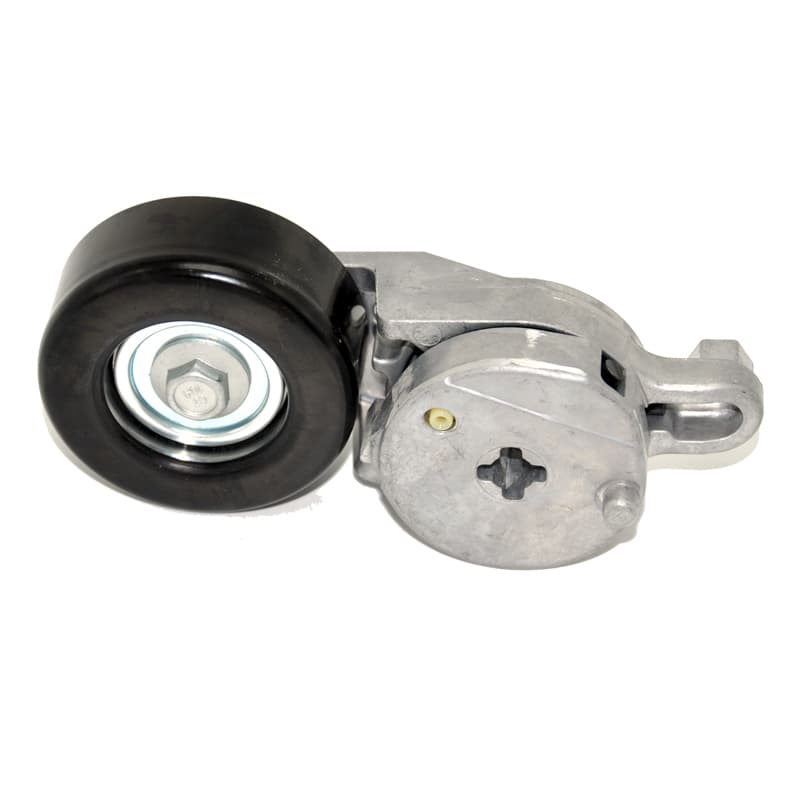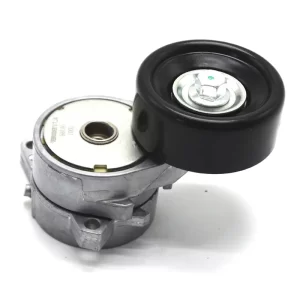Tensioners in cars are critical components that play a vital role in maintaining the reliability, efficiency, and longevity of the engine’s accessory drive system.
They ensure that belts or chains remain properly tensioned, contributing to smooth and efficient operation of engine accessories and components while preventing potential damage from slack or slipping.
Idler pulleys in cars are essential components that help to guide and maintain tension on the drive belts, ensuring smooth and efficient operation of engine accessories.
Maintaining the tensioner and idler pulleys in cars is essential for ensuring the smooth operation of the belt drive system, which in turn affects the performance of various engine components.
By providing a stable platform for the belt to travel around and maintaining proper tension, idler pulleys contribute to the overall reliability and performance of the vehicle’s engine and accessory systems.
In the context of cars, a tensioner refers specifically to a component within drive system that maintains proper tension on belts or chains.
Its primary function is to ensure that these belts or chains remain tight and properly aligned around various pulleys and components, such as the alternator, air conditioning compressor, water pump, power steering pump, and sometimes timing belts or chains.
Tensioners prevent slack in belts or chains, which is crucial for efficient operation and longevity of engine accessories. They help prevent slipping, which could lead to reduced performance or even engine damage.
It typically consist of a spring-loaded arm or pulley mechanism that applies constant tension to the belt or chain. This ensures that the belt remains at the correct tension as it wears over time.
Idler pulleys are used to route and maintain tension on the serpentine or drive belts within the engine compartment.
They are typically positioned in such a way that they help to change the direction of the belt and maintain proper tension, ensuring that the belt does not slip or come off under various engine operating conditions.
And they are typically simple in design, consisting of a stationary bracket with a smooth or grooved wheel (pulley) mounted on a bearing. The pulley wheel rotates freely on the bearing, allowing the belt to smoothly travel around it while maintaining tension.
Pulleys are often found in areas where the belt changes direction or where additional tension needs to be applied to maintain proper alignment and tension.
Development Processes for High Precision Tensioners
- Initial Concept and Design:
- Requirement Analysis: Gather customer needs and operational conditions.
- Concept Development: Create initial designs using CAD software.
- Feasibility Study: Evaluate practicality, cost, and manufacturing capabilities.
- Detailed Engineering and Simulation:
- Refined Design: Develop detailed designs with precise dimensions.
- Simulation: Use FEA to test stress and performance.
- Kinematic Analysis: Ensure smooth movement and interaction of parts.
- Material Selection and Testing:
- Material Choice: Select high-strength, durable materials.
- Prototype Creation: Make prototypes using rapid prototyping methods.
- Material Testing: Test for strength, fatigue resistance, and durability.
- Manufacturing Process Development:
- Process Planning: Plan manufacturing steps and quality control.
- Tooling Design: Create precise tools and dies.
- Pilot Production: Test the manufacturing process with pilot runs.
- Quality Control and Assurance:
- Inspeção: Set up rigorous inspection protocols.
- Process Control: Use statistical techniques to maintain quality.
- Non-Destructive Testing: Check for internal defects without damage.
- Performance Testing and Validation:
- Functional Testing: Test under real-world conditions.
- Vibration and Noise Testing: Ensure no unusual vibrations or noises.
- Failure Analysis: Identify and fix issues in non-conforming components.
- Final Production and Launch:
- Full-Scale Production: Move to large-scale manufacturing with quality control.
- Packaging and Shipping: Ensure safe and labeled packaging.
- Customer Feedback: Collect and analyze feedback for improvements.
- Continuous Improvement:
- R&D: Continuously innovate and improve designs.
- Training: Keep staff updated on the latest technologies.
- Customer Support: Provide robust support and address issues quickly.
By following these development processes, high precision tensioners are crafted to meet rigorous standards, ensuring reliable performance and longevity in their respective applications.
Contact us if you have any questions or requirements.







